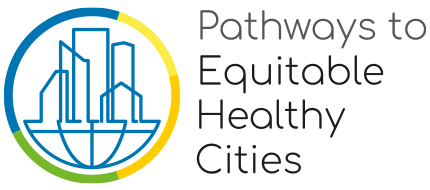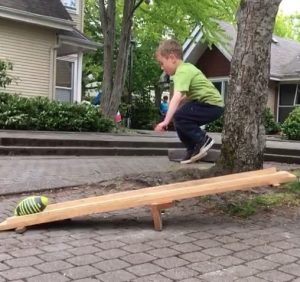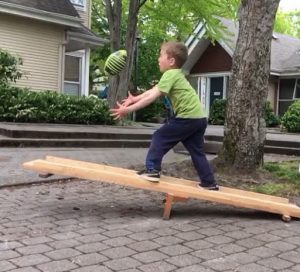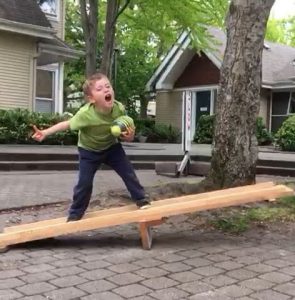Today I arrived home to find my five-year-old deeply engaged in a new activity. This endeavor required creativity, physical strength, balance, concentration, goal-setting and persistence. It does not have a formal name, is not a part of any physical education program, required no special equipment and was his own, unprompted innovation. Observing, I could see how it could contribute to the development of core strength, coordination, calculated risk-taking, a sense of agency and other developmental and health objectives, but most striking was the experience of pure joy this task afforded, the shout of triumph upon mastery of it.
Across cultures, children engage in play as part of a developmental program that builds physical, cognitive, social and emotional skills essential for survival. Play provides children opportunities to develop abilities, create hypothetical situations and test their capacity to navigate through and succeed in those scenarios. Outdoor play promotes vigorous physical activity and exposure to nature has been linked to multiple health benefits, including alleviation of psychological distress. Play is considered so critical to child development and wellbeing that the United Nations Convention on the Rights of the Child includes the right to play and equitable access to play.
Around the world, children’s freedom to play outside in the city has decreased over time as the effects of urbanization and car-based transportation have given rise to more physically restrictive or unsafe environments. Heightened parental anxiety and societal expectations have contributed to heavy regulation of play and limitation of children’s independent mobility. A decrease in play is coincident with lower levels of physical activity, higher rates of childhood diabetes, overweight, obesity and poor mental health. The pressures of rapid urbanization mean that communities often expand without consideration of the potential impacts on children’s access to outdoor environments or play.
How can cities measure the playability of their neighborhoods? How can they use this information to inform policies that ensure kids’ access to free play in local environments? Pathways to Equitable Healthy Cities is working with local researchers and societal partners in Vancouver, Accra, London, Dhaka and Beijing to produce actionable knowledge for addressing urban health and equity issues. This research seeks to partner with local stakeholders to understand priorities and needs, assess the health and social impacts of the built environment and to co-produce context-relevant research to inform policies for positive change in each unique setting. Existing initiatives in partner cities offer the opportunity to learn and share knowledge between cities: in London, UK, Street Play provide outside play space for children in urban communities. In Accra, Ghana, the Mmofra Foundation has partnered with children, mothers and local authorities to create play spaces for children in Malata and Nima markets.
Currently, we are working to develop a flexible metric using existing city data and large-scale data sources such as street-view images to assess the playability of neighborhood built environments. Engagement with local children, parents, experts and policy makers will inform the adaptation of this tool for use in different contexts, with the goal of enabling cities to identify areas of high and low playability and assess equitable distribution of playable spaces within their populations.
Though the challenges of supporting healthy childhoods are vastly different across geographies, cultures and contexts of Pathways partner cities, ensuring that all children are able to thrive in our cities emerged as a top priority in initial meetings with stakeholders and researchers from all sites. As I watch my son fully engage in the work of childhood, I am inspired by the thought of learning from the children, parents, experts and policy makers across these diverse settings and of working together to create environments that support kids’ health and development and make room in cities for their experience of joy.





